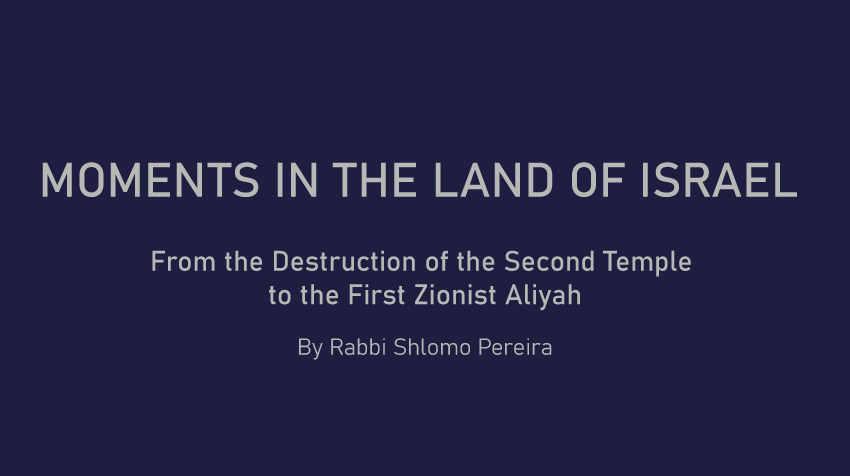Highlighting the permanent Jewish presence and the relevance of Jewish contributions in Eretz Israel as well as the continuous connection between Diaspora Jews and Eretz Israel throughout the centuries between the Destruction of the Second Temple and the onset of modern Zionism, through a series of one-page notes distributed weekly.
DID YOU KNOW THAT... by the middle of the 900s in Tiberias, the compilation of the most authoritative version of text of the Hebrew Bible was completed? Between the late 500s and late 900s, in Jerusalem and in the Galilee, most notably in Tiberias, generations of scribes worked on a complete system of Hebrew pronunciation and grammar. They were called the
Masoretes, the bearers of tradition - ‘mesorah’. They developed the Masoretic Text of the Hebrew Bible, which aside from the most reliable readings, featured a standardized division of the text into verses and paragraphs, as well as a standardized system of vowels and of cantillation notes in order to standardize the pronunciation. Aaron ben Moses ben Asher of Tiberias (d. 960), a descendent of at least five generations of Masoretic scribes, compiled an original collection of grammatical rules and Masoretic information in ‘Sefer Dikdukei HaTeamom’, or ‘Book of the Grammar of Accents’. He was ultimately responsible for the completion and diffusion of the most comprehensive version of the Masoretic text of the Hebrew Bible. R. Moshe ben Maimon [1138-1204] considered this as the most accurate text of the Hebrew Bible and used it in writing his own scrolls. In doing so, lent to these texts his enormous prestige. All Jews and the overwhelming majority of Christians to this day regard this Masoretic text as the authoritative version of texts of the Hebrew Bible. This is the Hebrew Bible as we know it, with its vowel and its cantillation marks. It may be interesting to note that an alternative contemporaneous Masoretic text is known to exist from the school of Ben Naftali also from Tiberias, also a scion of a family of Masoretic scribes. No complete version of this alternative text has survived, only excerpts. The two texts of the schools of Ben Asher and of Ben Naftali differ in a relatively small number of points the overwhelming
majority of which refer to the placing of pronunciation accents.


































